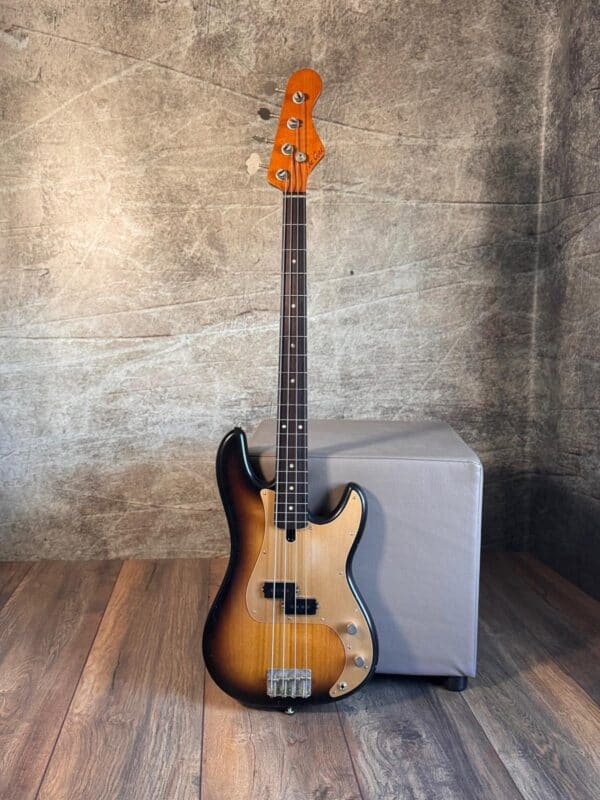De Gier
Basses
De Gier basses have carved out a niche in the boutique bass world by blending vintage inspiration with modern innovation. It all began in the early 1990s when Dutch luthier Sander De Gier, a bassist himself, sought to build instruments that could satisfy the demands of working musicians. Frustrated with the lack of basses that balanced classic tone with cutting-edge playability, De Gier started his journey by handcrafting his own instruments.
From day one, De Gier’s mission was clear: make basses that feel like they’ve been around for decades, but play and sound like they’re from tomorrow. His approach is rooted in deep respect for the iconic designs of the past—think the unmistakable tone of a ’60s Jazz Bass—but with improvements to suit modern players.
The Rise: From Local Secret to Global Recognition
In the early days, De Gier was a well-kept secret among bassists in the Netherlands and surrounding areas. Word spread quickly, though, as players started realizing that his basses had something special: a certain magic in the tone and a “just-right” feel. Sander’s relentless attention to detail and ability to work directly with musicians gave his instruments a personal touch that was hard to find with mass-produced basses.
It didn’t take long before De Gier’s reputation crossed borders. By the early 2000s, De Gier basses were being picked up by professional musicians across Europe, and the brand’s reputation grew internationally. His early models, like the BeBop and Soulmate, caught the attention of players who were looking for more than just another Jazz or P-Bass clone—they wanted something unique but still familiar.
The Models: Fusing Old-School with New-School
While De Gier draws heavily on vintage designs, his basses have always been about pushing the envelope. Let’s break down some of the key models that have made De Gier a serious contender in the boutique bass market:
- BeBop: De Gier’s nod to the Jazz Bass, the BeBop model blends the warm, punchy tone of classic ’60s basses with modern appointments. The 5-string BeBop expanded the versatility for bassists who need that extra low B, without sacrificing the vintage feel. It’s like taking a time machine to the ’60s and asking Leo Fender to make you a bass that fits today’s sonic needs.
- Soulmate: The Soulmate takes the vintage P-Bass vibe but adds Sander’s signature tweaks for more versatility and comfort. This is the kind of bass where simplicity meets soul—it’s straightforward but has everything you need to lay down a groove in any genre.
De Gier’s reputation has attracted some serious players over the years. From jazz legends to session greats, these basses have made their way into the hands of musicians who demand the best. This has only fueled Sander’s drive to keep innovating, as he works closely with bassists to refine his models and push the boundaries of what a bass can do.
His custom builds and limited-run projects have further solidified De Gier’s place as one of the top boutique brands in the world. But what really stands out is his dedication to building instruments for musicians. It’s never about trends or gimmicks—it’s about creating basses that inspire players to perform at their best.
Today: A Legacy in the Making
Fast forward to today, and De Gier basses are recognized as some of the finest hand-built instruments available. Each bass that leaves Sander’s workshop is a reflection of his commitment to quality, tone, and playability. Whether it’s a 4-string BeBop or a custom-built 6-string monster, De Gier’s instruments are made to last a lifetime.
In a world where many builders rely on flashy marketing or extreme designs, De Gier’s approach remains grounded in the simple idea that a great bass is one you want to play every day. Musicians who pick up a De Gier bass aren’t just buying an instrument; they’re investing in a tool that helps them find their voice, whether on stage or in the studio.



